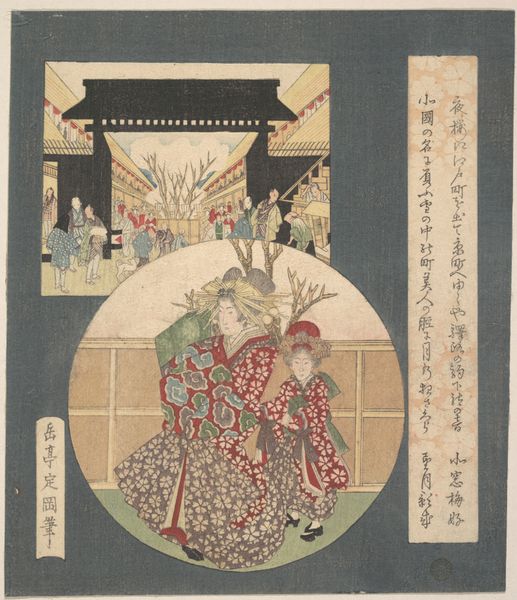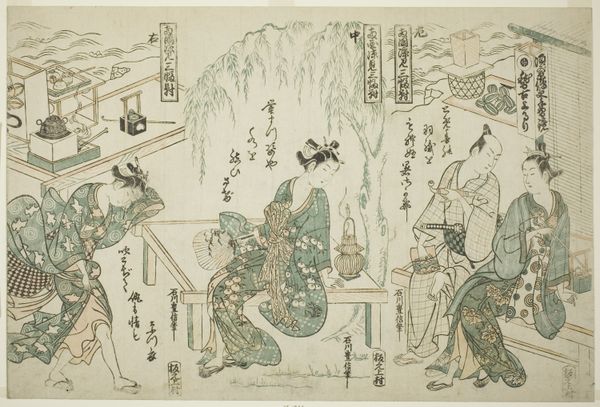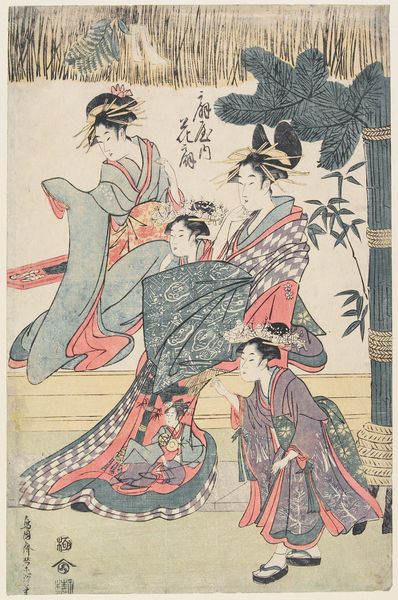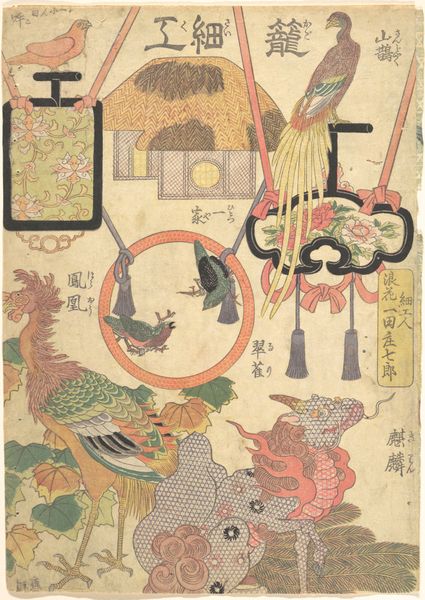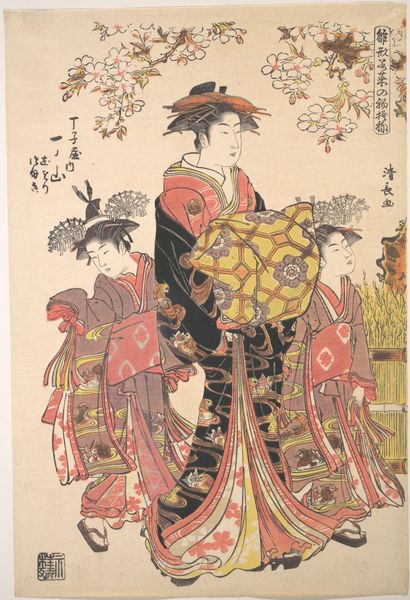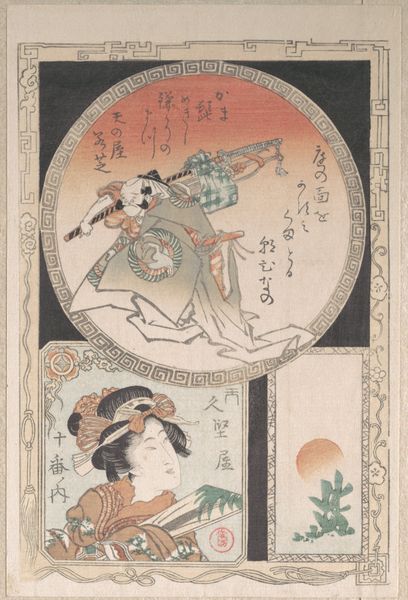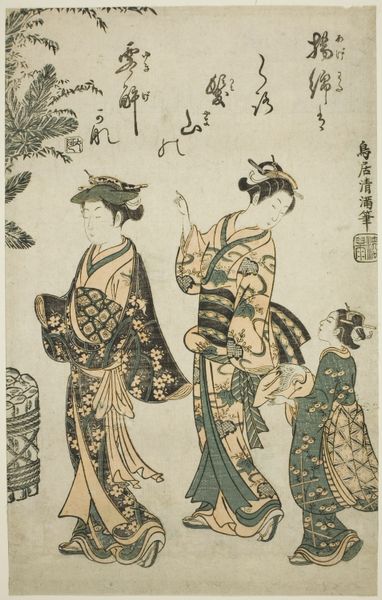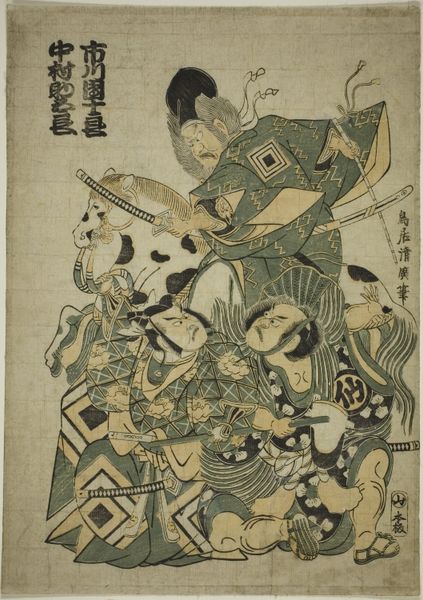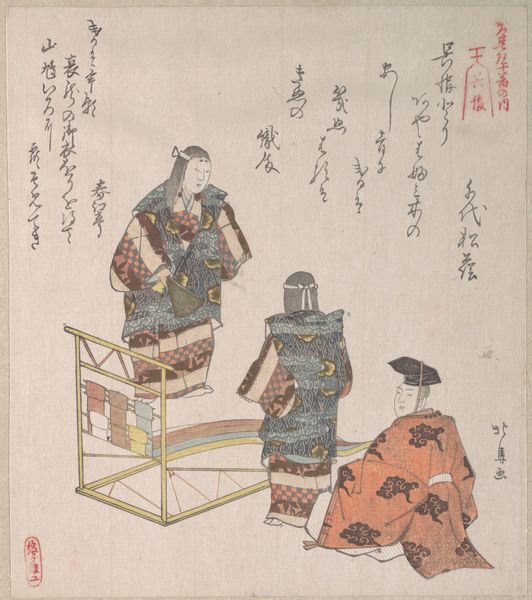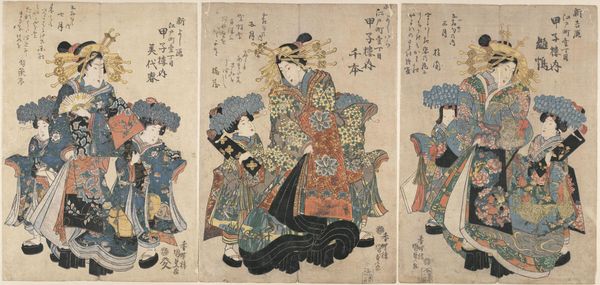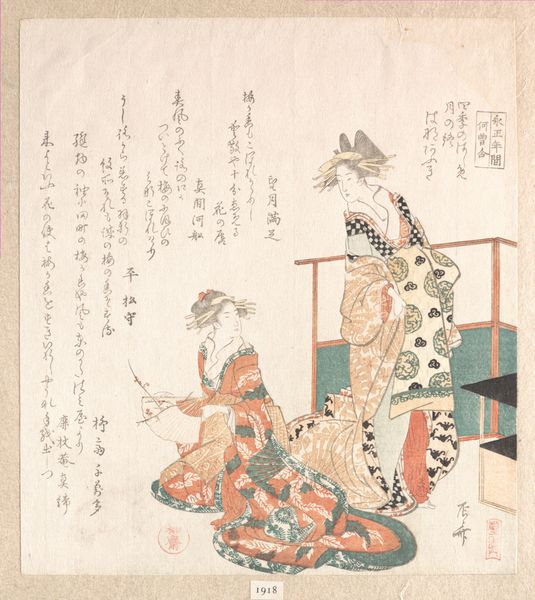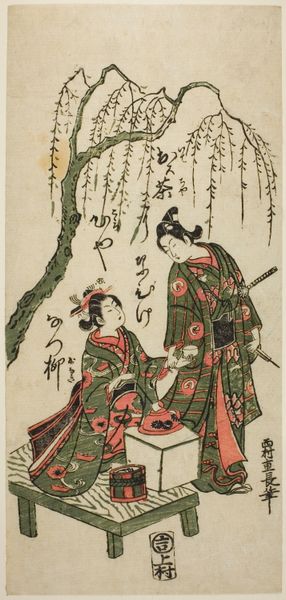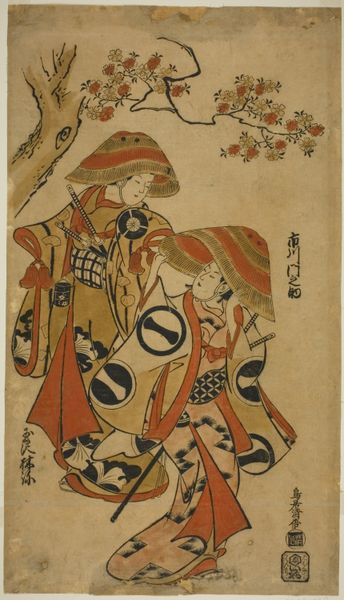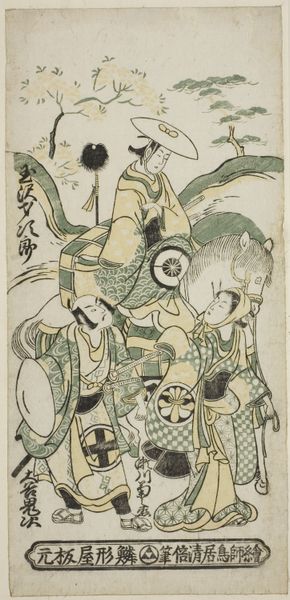
Craftsman by the Twelve Sign of Zodiac 1800 - 1861
0:00
0:00
print, woodblock-print
# print
#
asian-art
#
ukiyo-e
#
figuration
#
woodblock-print
Dimensions: Image: 13 5/8 × 9 5/8 in. (34.6 × 24.4 cm)
Copyright: Public Domain
Curator: Here we have Utagawa Kuniyoshi's woodblock print, "Craftsman by the Twelve Signs of the Zodiac," created sometime between 1800 and 1861. What are your initial thoughts? Editor: It’s chaotic, almost carnivalesque! The composition is busy, a vibrant mix of patterns and figures. I’m immediately drawn to the bizarre combination of animal heads on human bodies. Curator: Exactly. This Ukiyo-e print plays with figuration through symbolic representation of the Zodiac animals engaged in a craftsman's workshop, blending high art with everyday life, and printed using various labor intensive processes. Consider the woodblock technique—each color requires a separate block, painstakingly carved and aligned. What can this tell us about artistic labor? Editor: The layering speaks to the values of work and toil. The craftsman's identity intertwined with these animal symbols could reference specific craft guilds or trades linked to astrological signs and their associated mythologies, revealing shared cultural understanding and perhaps social status. Are there clues to read the cultural references between these figures? Curator: Absolutely. These symbols carry centuries of cultural and psychological weight. Notice the serpent figure, draped in an ornate robe. Snakes in Asian iconography, even today, can represent wealth, transformation, and sometimes deception. The juxtaposition with a tradesman implies… Editor: Perhaps that these seemingly mundane laborers possess hidden wisdom or even esoteric powers. The layering of meaning is what strikes me. The use of clothing and colors also carries information in visual terms that relates to the person's class and societal importance. The craftsman's role can thus be analyzed as both creative and social labor. Curator: Consider the raw materials used in production – wood, paper, inks. Sourcing these was a considerable undertaking in itself, creating its own dynamic networks of production and consumption. But this is how the art gets out there to the public. Editor: Yes! And what it might mean to its intended viewers! Thinking of the rabbit with tools, in a geometric patterned shirt, reminds me of the story that the rabbit grinds medicine. What the characters might mean at the time of making has changed over the centuries but still provides connections to the cultural values then and now. Curator: Seeing these animals within a crafted environment certainly gives fresh meaning. We appreciate them both as icons and markers of societal structures from centuries ago, informing the reality of today’s cultural values through objects like the woodcut process used. Editor: A great piece that can let us peek through the doors into another time to look through the visual cues and iconography in relation to societal standing! Thanks.
Comments
No comments
Be the first to comment and join the conversation on the ultimate creative platform.
